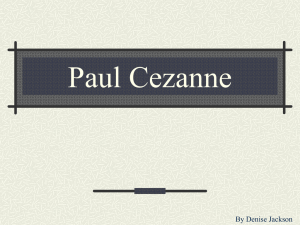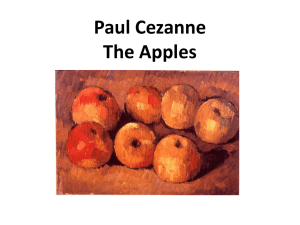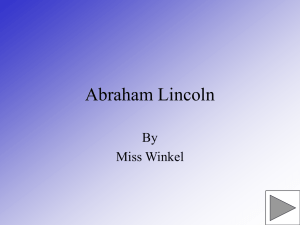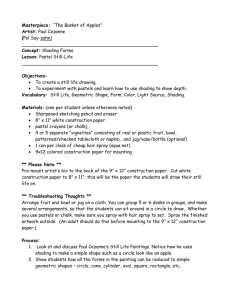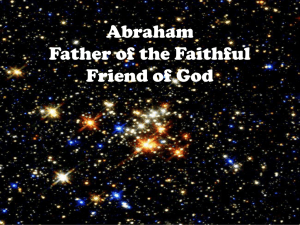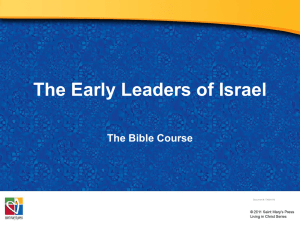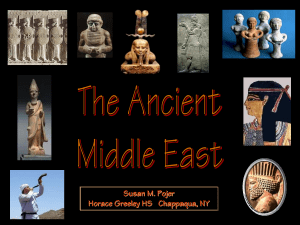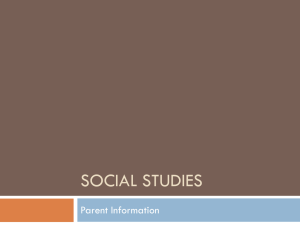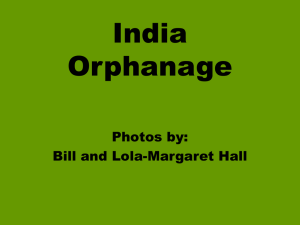Paul Cezanne
advertisement
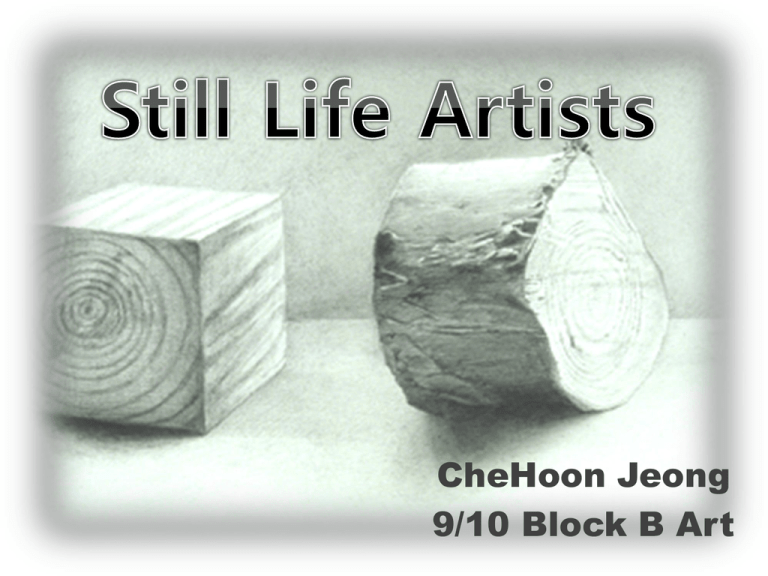
CheHoon Jeong 9/10 Block B Art Introduction to Artist: Place of Birth: The Hague (influential significance) The Hague was nearby a fishing village, which sea-animals were Abraham’s the primary subjects of art. The luster (light reflection) in sea life- animal’s was adequate for realistic observational drawing. Sea-animals often appear in his still-life masterpieces Was the founder of the “Painter’s Guild in The Hague The reflection that the fish has is drawn very well. The contrast transition with the reflection and the dark part of the fish is very smooth (a small layer of lighter gray is drawn between it to create this effect). Also the shadows are the darkest and the reflection is the brightest. “Still Life With Fish” (date: --) by Abraham Van Beyeren. Technique of Artist: Personally, although there is not much “emotion” in this, it was interesting how he put sea life-creature that makes me wonder if it is a different way of expressing emotion/interest/memory within art. • Baroque Art: •Originated from the Catholic counter-reformation (artist put more aspects of Christianity) • Usually one source of light •Started to draw subjects more detailed (realistic) •Usually have dramatic light and dark •Figures showing from dark shadows (background) •Generally contains cloth •Put emotion and variety in their work. Abraham was influenced by the baroque technique. There are evidence in his still-life art with traits of baroque art. The use of baroque art is evident in this picture. It was inspiring to see how Abraham used the baroque technique into still life. The one source of light is coming from the left, the objects are bright, which creates a dramatic difference with the dark background. Also the table cloth has a dramatic light and dark. “still life with lobster” (date: --)by Abraham Van Beyeren Other Information of Artist: It is interesting how it is easy to recognize the similarity between two artworks. The general layout of the picture is similar, with the background containing a cloth in the upper left corner, the table in a similar place and position. Also, there are many objects that are same, such as the lobster and the fruits. (compare with left) Abraham signed his work with canvases with the monogram: AVB, but failed to include the date. This is why it is hard to determine/know when was the art piece created. Most of Abraham’s still life work is a “oil-on-canvas”. Some of Abraham’s works contain similar features. The background is extremely dark, but the objects are bright, it makes the object really stand out. I really like how different types of objects are used, this help the viewer spot how different objects differ between each other depending on the shape, angle, “surface” type, media type etc. “Banquet Still Life” year 1667 by Abraham Van Beyeren “Still life with fruits” date: -- by Abraham Van Beyeren Introduction to the Artist: Paul Cezanne is recognized as a post-impressionist in modern day. Paul Cezanne was a French painter. He was influenced by Camille Pissarro, an impressionist. Paul Cezanne has both characteristics of impressionism and cubism. He is quoted as “the solidifier of impressionism”. Pablo Picasso and Matisse quoted“[Paul Cezanne] is the father of us all” Picture of Paul Cezanne Technique of Artist: Impressionism (influential): •Include small, think strokes •The brush marks in the painting is visible •The painting is drawn only detailed enough to express the nature of the object •Does not contain much detail. •Colors are mixed as minimum as possible. Instead, colors are placed side by side. •Cezanne’s Technique: •Cezanne broke down the object into simple, geometric shapes. (Sphere, cone, cylinder). •Use of primary colors This is one of my favorite paintings of Paul Cezanne. Because, the painting shows how he was influenced by impressionism and his technique clearly. For example, the brush strokes could be detected easily, and the colors are placed side to side, with only small mixing (especially in the apples). Moreover, I could clearly observe how he could break the objects into geometric shapes. “Still Life with apples” by Paul Cezanne 1890 The visible strokes help me understand on how he drew the painting. For instance, I could see the downward strokes from the skull and could see that the background was drawn swiftly, looking at the marks in the top left corner. It is fascinating how even though there is not much detail in the painting, the message could still be sent. For example, it could easily be recognized that the curtain is a curtain, although there are only little detail. Also the color choice was brilliant, the bright apples and the red color make the object seem to really advance. “Compotier, Pitcher and Fruit” by Paul Cezanne 1892~1894. “Pyramid of Skulls” by Paul Cezanne 1901. As you could see in this two different paintings which has the same object: flowers, you could spot the difference between the two artists. As mentioned before, Abraham Van Beyeren focuses mainly on the foreground, and the background is usually dark. Moreover, Abraham expresses as much detail he could draw in the object. Finally, the contrast between dark and light is very dramatic, as you can see in the flower picture in the left (dark background, brighter object). On the other hand, Paul Cezanne has a very different style of expressing still life. Cezanne does not draw as much detail compared to Abraham, but only draw the general shape to express the essence of the object. It is clearly shown that Cezanne, instead mainly uses color to send across the message and to add details. For instance, the colors are placed side-by-side, and the contrast between the two colors create the three-dimensional effect (detail). “Still Life with Flowers” by Abraham Van Beyeren -- “Chrysanthemums” by Paul Cezanne1896~1898 Resources: http://www.terminartors.com/artistprofile/Beyeren_Abraha m_van http://www.ehow.com/info_8152917_four-characteristicsbaroque-art.html http://www.huntfor.com/arthistory/c17thmid19th/baroque.htm http://collectionsonline.lacma.org/mwebcgi/mweb.exe?req uest=record;id=61794;type=101 http://www.scholarsresource.com/browse/artist/105 http://collectionsonline.lacma.org/mwebcgi/mweb.exe?req uest=record;id=61794;type=101 Images: http://www.topartprint.com/images/artists/Abraham_Hend rickz_van_Beyeren/paintings/beyeren034.jpg (Image) http://www.topartprint.com/images/artists/Abraham_Hend rickz_van_Beyeren/paintings/beyeren014.jpg (Image) http://www.kunstkopie.nl/kunst/abraham_van_beyeren_951 /fruit_beyeren.jpg (image) Resources: http://en.wikipedia.org/wiki/Paul_C%C3%A9zanne http://www.ehow.com/way_5406089_cezanne_s-paintingtechnique.html http://www.ibiblio.org/wm/paint/auth/cezanne/sl/ http://www.online-artauction.com/blog/paul-cezanneadapted-impressionist-technique/ http://www.paul-cezanne.org/ Images: http://www.ibiblio.org/wm/paint/auth/cezanne/sl/


